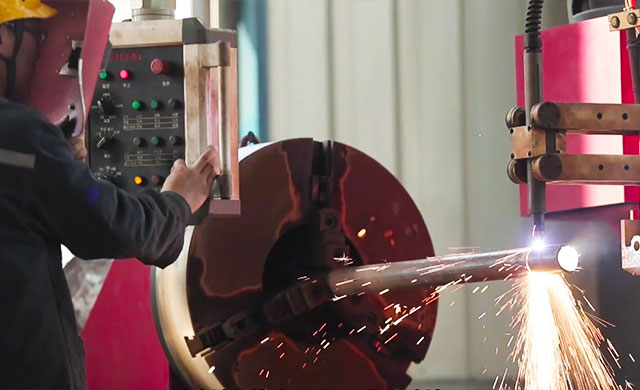
Dec . 04, 2024 09:16
Back to list
natural gas regulator
Understanding Natural Gas Regulators Essential Components for Safe and Efficient Gas Supply
Natural gas has become an integral part of our daily lives, fueling homes, industries, and power plants globally. With its widespread use, ensuring the safe and efficient delivery of natural gas is paramount. This is where natural gas regulators play a critical role. Understanding the function and importance of these devices is essential for both consumers and professionals in the energy sector.
What is a Natural Gas Regulator?
A natural gas regulator is a mechanical device that controls the pressure of natural gas as it moves from the supply source to the end users. Natural gas is typically transported through pipelines at high pressures. However, the pressure needs to be significantly reduced before it enters residential or commercial premises to prevent damage to appliances and ensure safe operation. The regulator is responsible for this pressure reduction and maintains a steady flow of gas under varying demand conditions.
How Do Natural Gas Regulators Work?
Natural gas regulators function predominantly through the principles of pressure differentials. They consist of a spring-loaded diaphragm that moves in response to changes in pressure. Here’s a basic outline of how they operate
1. Pressure Sensing The regulator continuously monitors the inlet (supply) pressure and the outlet (delivery) pressure.
2. Pressure Regulation When the outlet pressure exceeds the preset level, the diaphragm pushes against a spring, opening a valve to let gas escape, thereby reducing the pressure.
3. Stabilization Conversely, when the outlet pressure drops below the desired level, the diaphragm moves back, causing the valve to close and stabilize the pressure.
These devices can also include additional features, such as built-in safety mechanisms to detect and respond to abnormal pressure levels, thus ensuring safe operation.
Types of Natural Gas Regulators
There are two primary types of natural gas regulators first-stage regulators and second-stage regulators.
natural gas regulator

1. First-Stage Regulators These are typically used in gas transmission systems to reduce the high pipeline pressure to a medium pressure suitable for distribution. They are often installed near the gas source or in field metering stations.
2. Second-Stage Regulators These are found closer to the end-users and further reduce the medium pressure to a low pressure, ready for use in residential and commercial applications. They are critical for household appliances such as ovens, heaters, and water boilers.
Importance of Natural Gas Regulators
Natural gas regulators are vital for several reasons
1. Safety By ensuring the gas is at a safe pressure, regulators prevent potentially hazardous situations including gas leaks, fires, and explosions.
2. Efficiency Regulating the pressure helps maintain the efficiency of gas appliances. Appliances operating at their intended pressure level perform better and have longer lifespans.
3. Economic Benefits Proper regulation reduces waste and maximizes efficiency, which can translate into lower energy costs for consumers.
4. Environmental Protection Efficient gas management through regulators can mitigate the environmental impact associated with gas leaks and excess emissions.
Maintenance and Inspection
Regular maintenance and inspection of natural gas regulators are essential to ensure their optimal performance. Users should look out for signs of wear and tear, leaks, and fluctuations in gas pressure. Routine checks by certified professionals can identify potential issues before they escalate, preserving both safety and efficiency.
Conclusion
Natural gas regulators are unsung heroes in the infrastructure that supports natural gas distribution. Their role in maintaining safe and efficient gas pressure can’t be overstated. As the world increasingly relies on natural gas for energy, understanding and properly maintaining these regulators will be crucial for safety, efficiency, and sustainability. Whether for residential or industrial use, the importance of natural gas regulators warrants attention from consumers, professionals, and regulators alike. Ensuring their integrity through regular inspection and maintenance will contribute to safer and more efficient energy use for all.
Next:
Latest news
-
Safety Valve Spring-Loaded Design Overpressure ProtectionNewsJul.25,2025
-
Precision Voltage Regulator AC5 Accuracy Grade PerformanceNewsJul.25,2025
-
Natural Gas Pressure Regulating Skid Industrial Pipeline ApplicationsNewsJul.25,2025
-
Natural Gas Filter Stainless Steel Mesh Element DesignNewsJul.25,2025
-
Gas Pressure Regulator Valve Direct-Acting Spring-Loaded DesignNewsJul.25,2025
-
Decompression Equipment Multi-Stage Heat Exchange System DesignNewsJul.25,2025

